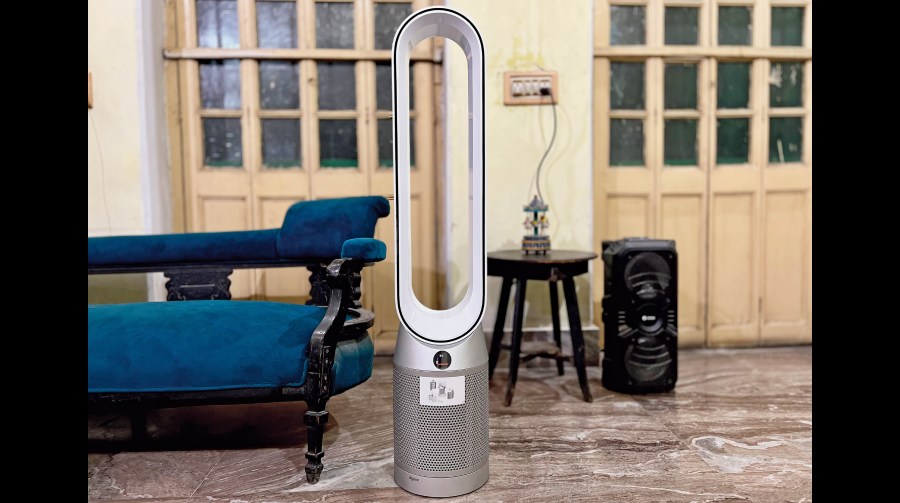No matter the city, the degree of pollution varies from one area to next. But the problem with indoor air is that anything released indoors is more likely to be breathed in than if it was released outdoors. Indoor pollution can be a big issue. One of the companies that has a lot of expertise in this area is Dyson, founded by James Dyson whose team is quick to come up with products with purpose. We spoke to Muzaffar Izamuddin, design manager, environmental care at Dyson, about indoor air pollution and here’s what he had to say.
What are the common misconceptions when it comes to indoor air pollution?
There may still be a lack of awareness around indoor air quality as many perceive that only outdoor air is harmful. But home isn’t always a safe haven and indoor air pollution can be worse than outdoors. Some of the myths when it comes to indoor air pollution are….
• Indoor air pollution is only present if it can be seen: Most of us believe that smoke coming out of the kitchen or us sensing an unusual odour inside our house could be the only signs of bad air quality. However, air pollution is not always visible to the naked eye. The air inside our house can contain microscopic particles, much smaller than the size of human hair, that you cannot see or contain invisible gases that may be harmful to our health.
• Indoor air quality is always better as compared to outdoor air quality: Indoor air quality appears to be better than outdoor air quality, where visible clouds of dark smoke can be seen coming out of cars, factories and so on. However, indoor air quality can be up to five times worse than the air outdoors. Many activities that we undertake inside our homes and workplaces release gases, particles, debris, and other contaminants into the air that contribute to poor indoor air quality . For example, air fresheners and deodorants can contain VOCs and benzene, which can be released with the fragrance when sprayed and the cleaning products can contain benzene and household fumes and odours, deteriorating the indoor air quality.
• Allergens can only be found outside of the home: Again, this is a misconception that allergens cannot thrive indoors. In reality, biological pollutants like viruses and allergens, can always infiltrate our homes from outdoors, while others can originate indoors. Humidity, standing water, and certain temperature ranges can help dust mites, mould and bacteria proliferate. Other biological pollutants commonly found indoors include pet dander and faecal matter left by rodents and bugs.
• One cannot do much about bad air quality: It is not the case that if the air quality has deteriorated then we have no control over it. However, the use of a smart air purifier and adopting smart cooking habits such as ensuring that kitchen appliances like ovens or stoves are fully vented, and are installed, used, and maintained correctly can help to minimise the exposure to potentially harmful pollutants such as particulate matter, nitrogen dioxide (NO2), carbon monoxide and formaldehyde. Furthermore, opening the window while you cook if the air outdoors is clean enough or using mechanical ventilation like a purifying fan can assist in filtering out pollutants.
Heatwaves are in the news and soon it will be monsoon and extremely humid conditions. How do such situations affect indoor air quality?
Air pollution is a problem which exists all around the year. Different seasons see an increase in certain pollutants due to factors such as temperature, climate, and human activity.
During a heatwave, arid weather conditions can loosen more dust in the air. This dust is made up of loose soil, airborne ash, and stirred-up road dust which combined with increased temperatures, can significantly increase the presence of airborne PM10 pollution. When Delhi experienced a heatwave for a couple of weeks, Delhi Control Committee’s data revealed PM10 levels rose five to six times at some locations than the standard 100 micrograms per cubic metre, earlier this month.
Heat also exacerbates the effects of pollution — high temperatures trigger chemical reactions that increase pollution emissions.
Monsoons may bring some respite from air pollution, but they can have a downside too. With monsoon also comes humidity which increases the amount of harmful/toxic chemicals in the air. It also causes dust mites in our homes, dampening the quality of the air. Bacterial and viral organisms that cause respiratory infections thrive as a result of high and low humidity.
However, you can improve your indoor air quality during these seasons with an air purifier. Dyson’s latest air purifiers have a HEPA filter that meets the H13 standard and captures 99.95 per cent of particles as small as 0.1microns, as well as particles such as allergens, bacteria, pollen, and mould spores. They also automatically detect airborne particles and gases and simultaneously report to the LCD screen in real-time, encouraging well-being and maintaining comfort levels in the room. Using Air Multiplier Technology, the machine can project purified air to every corner of the room.

Muzaffar Izamuddin, design manager, environmental care at Dyson
How is indoor air pollution affecting asthma?
According to the Global Asthma Report 2018 , out of 1.31 billion people, six per cent children and two per cent adults suffer from asthma in India. Asthma is one of the most common chronic diseases and while asthma triggers are diverse, research suggests there may be a link between asthma and air pollution.
With poor air quality, we can be taking in various pollutants, such as PM10, PM2.5, VOCs and NO2 in the air. These can be released as a result of regular human activities that we follow in our everyday life like cleaning homes using disinfectants, use of incense sticks; cooking, especially deep frying, smoking and so on are a major source of airborne particles that contribute to pollutants in households.
However, such pollutants are often not visible to the naked eye and may create an unhealthy indoor environment. We can do little to control the quality of the air we breathe outside. But there are ways we can protect our health and wellbeing in our homes. If one experiences breathing issues or health conditions related to polluted air, investing in an air purifier can be a smart move.
How important are smart air purifiers in a place like Calcutta or Delhi?
The average AQI in Delhi in April this year was the worst for the month since 2016, according to Central Pollution Control Board data. And, according to the analysis by the Centre for Science and Environment for Calcutta, the average level of PM 2.5 last year in Calcutta was more than 1.5 times the national standard and more than 13 times the standard set by the WHO. We might feel that if we stay indoors, we will be protected from the outdoor air pollution, however, outdoor pollutants, can also enter our indoor spaces, creating a complex cocktail of dirty air.
Air purifiers can help us control and mitigate the ill effects of bad air quality in polluted cities such as Delhi and Calcutta. Indoor air can be a concoction of potentially dangerous volatile organic compounds (VOCs), including formaldehyde, as well as particulate matter such as pollen, dust, bacteria, and nitrogen dioxide. An air purifier tackles the pollution in our homes that is not visible to our naked eye. Dyson smart air purifiers can do much more. On auto mode, the air purifiers senses and reports automatically. The integrated sensors constantly analyse the air, while Dyson’s unique algorithm cross-checks data every second. It diagnoses pollutants at a molecular level, displaying live results on the LCD. With Dyson Link app, you can also control and monitor air quality from anywhere.










